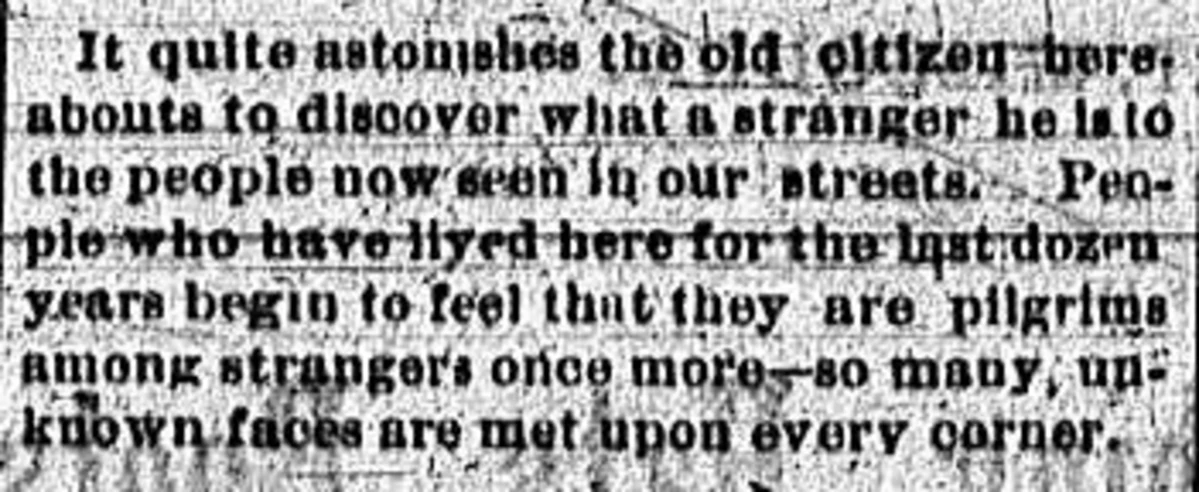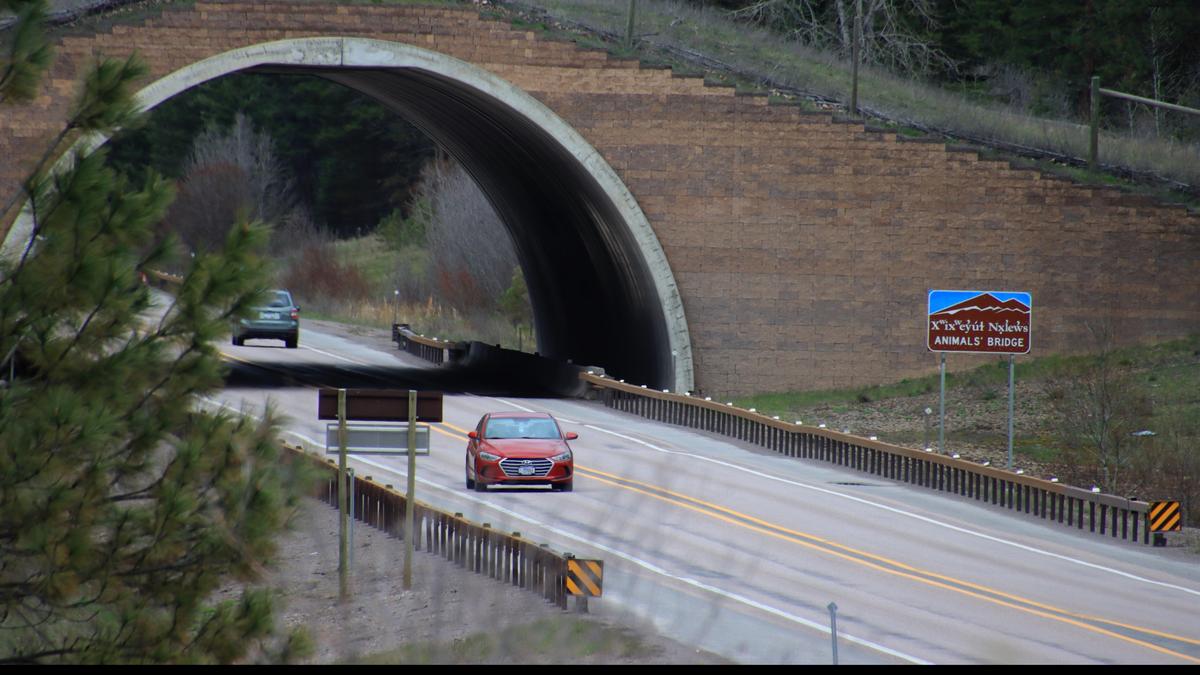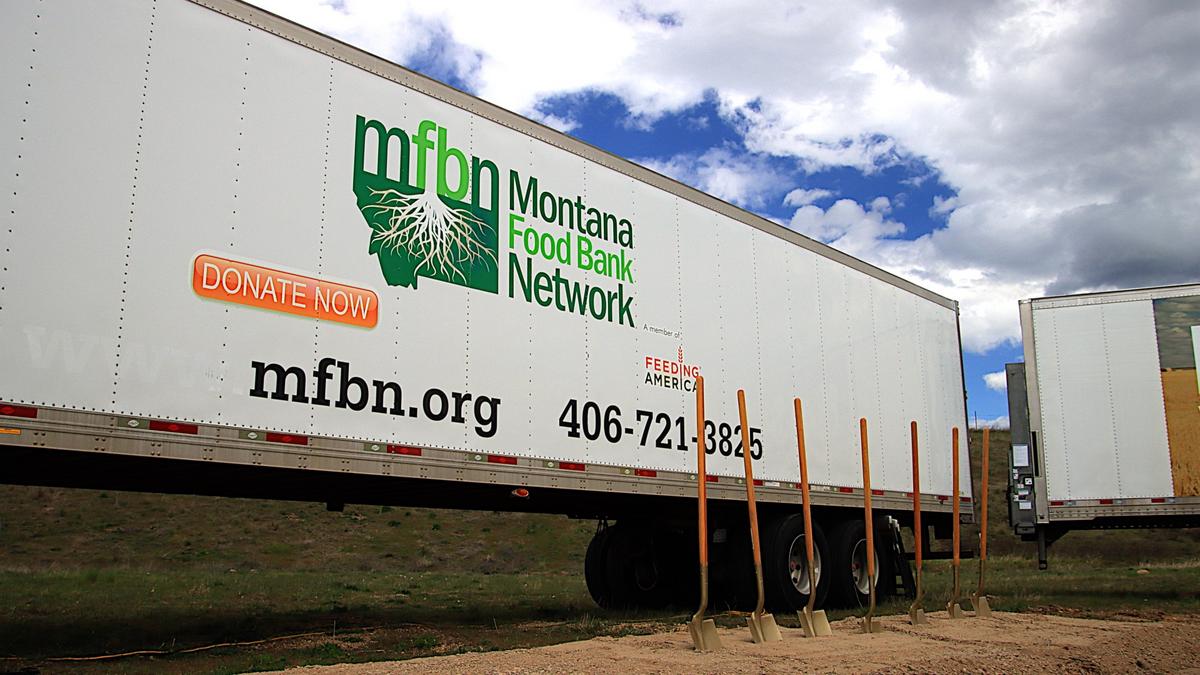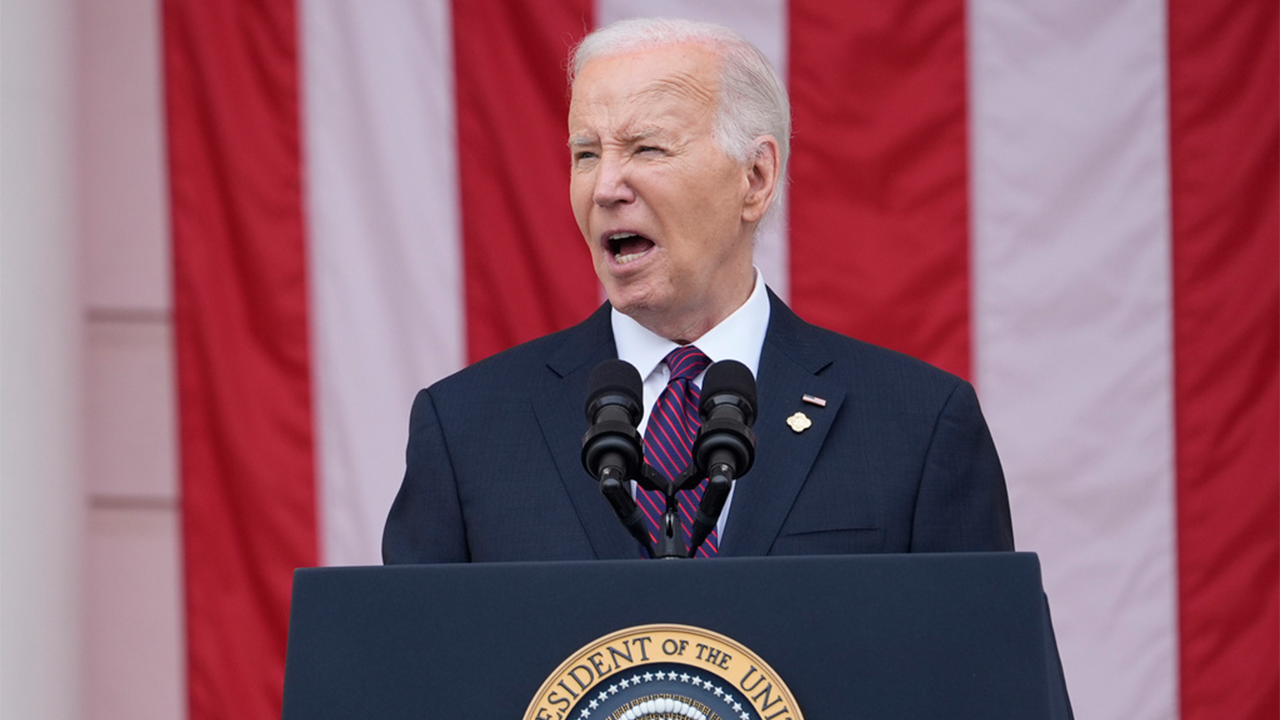Montana
Harmon’s Histories: From the start, Missoula was Montana’s Garden City

By Jim Harmon/Missoula Current
“It quite astonishes the old citizen hereabouts to discover what a stranger he is to the people now seen on our streets. People who have lived here for the last dozen years begin to feel that they are pilgrims among strangers once more – so many unknown faces are met upon every corner.”
It’s a lament often heard these days in the city of Missoula – but the quote is actually from a newspaper column of another era: 1881.
Back then, the Garden City was a mere teenager of about 15 years with a population of 447 souls. The whole county had “but 2,475 inhabitants.”
The biggest change was yet to come. The town’s population would skyrocket to over 14,000 with the railroad’s arrival in the late 1800s.
But in 1881, Missoula was still a fur-trading and agricultural economy, with gold being discovered in the region.
“To the looming emigrants this spring,” wrote The Weekly Missoulian, “we would say, Do not condemn Montana until you have seen Missoula County – justly called the ‘garden spot.’ ”
Agriculture (writ large and small) occupied much space in local newspapers.
The Bitter Root Valley south of Missoula was described as a “fertile plain of fifteen miles in width (that) has hardly an acre that to the industrious rancher will not yield well, under cultivation.”
In late June 1881, Mrs. Frank Ives delivered to the The Weekly Missoulian, “specimens of the Mammoth gooseberry of two months growth. The berries were about the size of wild plums on a stem of eight inches in length.”
That same month, Lyman Blodgett set out for Missoula with a load of “hen fruit” for the city markets. But it didn’t go so well.
“Just after leaving home,” it was reported, “he drove up a steep pitch in the road, and the whole load of 70 dozen eggs shot out of the rear of his wagon in promiscuous profusion.”
Mr. Blodgett “made a few remarks suitable to the emergency,” then salvaged about half the load, and continued on to the Garden City.
Missoula, in 1881, was proud of its “fine courthouse, a good hotel, some half-dozen substantial brick business houses, and two or three times as many wooden ones, occupied by stores which expose for sale every variety of desirable merchandise.”
The community also boasted of its post office, bank, public and private schools, flouring mill, barber shop and “all the saloons necessary.”
The town, “right under the shadow of grand old mountains” had “as pure, cool water, fresh from the mountains, as can be found in Montana,” and “numerous comfortable, and a few elegant, residences, with handsome grounds adjoining.”
The community loved to socialize. Fair time was a big deal, with horse racing for large purses, displays of agricultural produce plus “the workmanship of our artisans and the industry and taste of our ladies at home.”
Then, as now, Missoula was a community of music. A traveling orchestra called the “Plunkett Constellation” performed that summer to great reviews. The troupe included a violinist who “superbly manned” his bow, and the leader of the orchestra was described as a “musician of rare ability.”
But one well-intentioned event was caught up in a bit of controversy.
Father L. Van Gorp, S.J., wrote to The Missoulian on June 22, “I noticed in the paper an advertisement for a grand ball to be given on the 4th of July (in Frenchtown) for the benefit of the Catholic church.”
“Now, while I duly appreciate your efforts to raise funds for the completion of your church I would respectfully advise you to do so by more approved means than by the giving of a ball.”
“Let it be known to all that the profits of the ball will under no circumstances be accepted for the benefit of the Catholic church.”
The group responded in the next issue of the paper: “In the name of the Catholics of Frenchtown, we beg leave to say that the ball will not be given for the benefit of the church.”
“Nevertheless, we do feel it’s just as appropriate for us at Frenchtown to give a ball for the benefit of our church, as it is for our neighbors of the same religion to hold fairs or bazaars where dancing is permitted.”
Back in Missoula, plans were underway for the 4th of July celebration. “The largest stock of fireworks ever brought into Missoula county arrived at Dickenson’s – consisting of rockets and parachutes (from four pounds to one ounce), triangles, buzz-wheels, Roman candles and firecrackers.”
And so it was in Missoula in the summer of 1881 – a community proud of its past and looking to its future.
Jim Harmon is a longtime Missoula news broadcaster, now retired, who writes a weekly history column for Missoula Current. You can contact Jim at fuzzyfossil187@gmail.com. His best-selling book, “The Sneakin’est Man That Ever Was,” a collection of 46 vignettes of Western Montana history, is available at harmonshistories.com.
Get to Know Missoula A to Z
All about Missoula, Montana.
Gallery Credit: Angel

Montana
Northwest Montana mountain snowpack rebounds in May

May 27—High-elevation snowpack in the Swan Range has remained near or above historical averages for most of May thanks to a series of cold storms that dumped snow and rain across the region.
The snow-water equivalent measurement registered at 39.1 inches for Noisy Basin on May 26, according to data collected at a SNOTEL weather station located at 6,040 feet. The median for that date is 31.6 inches. The snow-water equivalent is the amount of water held in the snowpack.
Likewise, about 83 inches of settled snowpack remains at Noisy Basin, considerably more than the median of 65.5 inches for May 26.
While a dry winter fueled by an El Nino weather pattern kept Northwest Montana’s mountain snowpack below average through the beginning of May, late-season snow storms have maintained and even added to the snow depth in some areas.
The Noisy Basin snowpack actually peaked for the season on May 9 at 108 inches. The peak depth normally occurs in mid April before completely melting out by late June.
It’s a similar situation for Northwest Montana’s other mountain ranges.
A weather station on Flattop Mountain in Glacier National Park showed a snow depth of 72 inches on May 26, slightly below the median of 80.5 inches. Snow depth at Stryker Basin in the Whitefish Range was 50 inches, while Big Mountain’s upper reaches still held 53 inches of snow.
Overall, the Flathead Basin snowpack was 85% of normal on May 26, and 79% in the Kootenai Basin.
In the valley, Kalispell has seen measurable precipitation on 15 days so far this month. Between May 22-25, about 1.13 inches of rain was measured at Glacier Park International Airport. Precipitation month-to-date for Kalispell is 1.89 inches, slightly higher than the average of 1.42.
The Flathead River at Columbia Falls crested at 8 feet during the recent rainy spell and was expected to rise to 10 feet by mid week. Flood stage is 13 feet.
Potent and potentially dangerous thunderstorms could affect the Flathead Valley on Tuesday. Heavy rainfall of half an inch in 30 minutes is possible. Urban areas could see ponding of water in poor drainage areas if they take a direct hit from a storm, according to the National Weather Service in Missoula.
Temperatures will run 5-10 degrees below normal, with overnight lows dipping into the 30s Wednesday night through Friday.
High pressure returns by the weekend with pleasant temperatures in the 70s.
Montana
Montana Veterans Memorial hosts annual ceremony in Great Falls

The Montana Veterans Memorial Association hosted its annual Memorial Day ceremony on Monday with guest speakers Anthony and Janet Seahorn.
Anthony was deployed to Vietnam in 1968 and returned home 11 months later with mental and physical wounds from combat that he is still living with today.
“We always really appreciate military communities and the veteran presence, and what we’ve found in in our experience, since we wrote the book, [is] people want to talk about our story. Our story oftentimes is their story,” said Anthony.
Anthony’s wife Janet co-authored the book “Tears Of A Warrior” from her perspective as a wife who has lived 50 years with a veteran who lives with post-traumatic stress disorder (PTSD).
MTN News
“It isn’t just the veterans who come back and serve, the families serve, and that is parents and spouses especially and children, and we forget the children,” Janet explained. “If that family, especially those that support the veterans, if they aren’t intact, if we don’t mentor to them and make sure that they are solid, it is going to increase the trauma and the dysfunction, which is not what people fought for.”
The book is their experience of living with post-traumatic stress after returning home from combat. They travel and share their story with veterans, first responders, and families, hoping to make a difference in their healing process.
With their overall message being “if we send them, then we must mend them,” Anthony and Janet shared part of their story during the Memorial Day ceremony, encouraging the community to honor and remember those who never returned home and those who did and are living with PTS.
“Memorial Day is really in remembrance of and honoring those who never returned home. I mean, so many of our young Americans have not returned home,” Anthony said. “We were just in Normandy and all of the white crosses of the young Americans who died there during D-day, it pulls at your heartstrings. We have friends that are buried in Arlington, and to go there and see the thousands and thousands of headstones, you know, certainly gives you more of an appreciation than ever of the privilege and the freedoms that we have.”

MTN
Their story is meant to encourage veterans and their families who are also living with PTSD and to support their healing journey.
“For those of us that have served in combat, even if you do return back home, your life is never the same again. You’ve experienced things that you had never experienced before. And when you’re talking life and death situations, I mean, that definitely changes and impacts who you are.”
For more on their story, click here to visit the website.
Since it opened in 2006, the Montana Veterans Memorial has placed more than 7,400 tiles honoring Montana veterans, both living and deceased. About 200 new tiles are added every year before Veterans Day and Memorial Day.
The Montana Veterans Memorial is at 1025 25th Street North in Great Falls.
For more information, or if you would like to honor a veteran, click here to visit the website, or call 406-454-9070.
Montana
Largest school district in Montana raises pay, still behind Wyoming • Daily Montanan

Billings Public Schools, the largest district in Montana, used to get a flood of applications when it posted a teaching job.
Now, Superintendent Erwin Garcia said it’s getting one application for every 10 positions, roughly a reverse of the 10 apps to one single job it used to get.
He said teachers apply from other states — “They love Montana” — but they change their minds once they realize the pay compared to the cost of housing.
“We are scratching our heads right now,” Garcia said. “What are we going to do?”
This month, Billings moved ahead on a deal that will mean a significant increase for rookie teachers, he said — from $41,803 to $46,900.
“What we want is to be the best paying district in Montana, so we want to be sure beginning teacher pay jumps up significantly,” he said.
However, data Garcia presented last week to the school board shows Billings is still behind at least a couple of nearby and competing districts in Wyoming. For example, his data shows Sheridan School District pays $54,525 to new teachers.
“We still have a long way to go compared to Wyoming salaries, especially at the base,” he said.
Montana has long been at the bottom of the heap for starting teacher pay, and Garcia told the school board that even with some increases, teachers are still behind with the rising cost of health insurance.
In 2021, the Montana Legislature created the TEACH Act to try to help increase starting teacher pay. However, a report to lawmakers earlier this year said starting pay is still low, citing a national benchmark that ranked Montana 51 in 2023. It said new teachers here earn $6,000 to $13,000 less than in neighboring states.
The act creates a payment that goes to districts, not directly to teachers, and the report from the Montana Legislature’s Office of Research and Policy Analysis said the number of teachers who qualify for the incentive increased “a bit” from 2023 to 2024, but the number of school districts receiving the money dropped.
On Friday, Garcia said more seasoned teachers in Billings also will see increases following recent negotiations, generally to the tune of 5.9%, and he said teachers who have master’s degrees and more experience are “very competitive” with Wyoming.
For example, a teacher moving from year five to year six will go from $61,671 to $65,242.
However, Garcia said if Montana doesn’t address the cost of housing, day care, and health insurance, teachers won’t be able to afford to take jobs in this state.
“Eventually, we are going to run out of teachers in the profession. And then we’re just going to have to use AI (artificial intelligence). Isn’t that sad? It’s the reality,” Garcia said.
He said he doesn’t want people to take his remarks as a threat, but he does want to be transparent about the limited alternatives. They include bringing in teachers from overseas, who sometimes struggle with the language, he said — and AI, which he said would represent “a decline of civilization.”
“If we do something like that, we’re in trouble. That’s why we need to increase teacher salaries,” Garcia said.
He said in some cities in Montana, teachers don’t have certificates, which he doesn’t want to see either.
His focus is on quality education for students and a strong workforce for the future of the state. But Montana is behind, he said; by comparison, Montana spends $315 million less on education on average on a per pupil basis than other states.
The Billings Education Association could not be reached Friday for comment.
In an earlier interview, Amanda Curtis, president of the Montana Federation of Public Employees, said year after year, elected officials “dabble around the edges at school funding” during legislative sessions.
She said Montana recently has seen 1,000 open teacher jobs, but the teachers Montana is graduating aren’t taking jobs here, and the fix doesn’t require rocket science.
“I’m tired of people pretending there’s some other complicated solution,” Curtis said. “Just f**king pay them.”
-

 Movie Reviews1 week ago
Movie Reviews1 week ago‘The Substance’ Review: An Excellent Demi Moore Helps Sustain Coralie Fargeat’s Stylish but Redundant Body Horror
-

 News1 week ago
News1 week agoVideo: A Student Protester Facing Disciplinary Action Has ‘No Regrets’
-

 Movie Reviews1 week ago
Movie Reviews1 week ago‘Rumours’ Review: Cate Blanchett and Alicia Vikander Play Clueless World Leaders in Guy Maddin’s Very Funny, Truly Silly Dark Comedy
-

 Movie Reviews1 week ago
Movie Reviews1 week ago‘Blue Sun Palace’ Review: An Intimate, Affecting and Dogma-Free Portrait of Chinese Immigrants in Working-Class New York
-

 Culture1 week ago
Culture1 week agoFrom Dairy Daddies to Trash Pandas: How branding creates fans for lower-league baseball teams
-

 World1 week ago
World1 week agoPanic in Bishkek: Why were Pakistani students attacked in Kyrgyzstan?
-

 Politics7 days ago
Politics7 days agoAnti-Israel agitators interrupt Blinken Senate testimony, hauled out by Capitol police
-

 World1 week ago
World1 week agoRussian court seizes two European banks’ assets amid Western sanctions


















